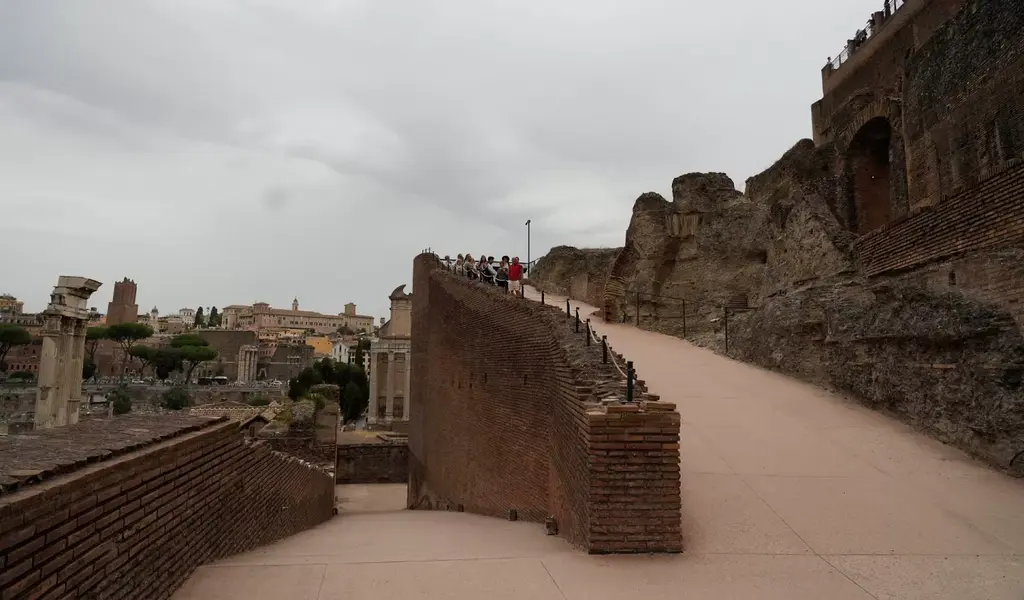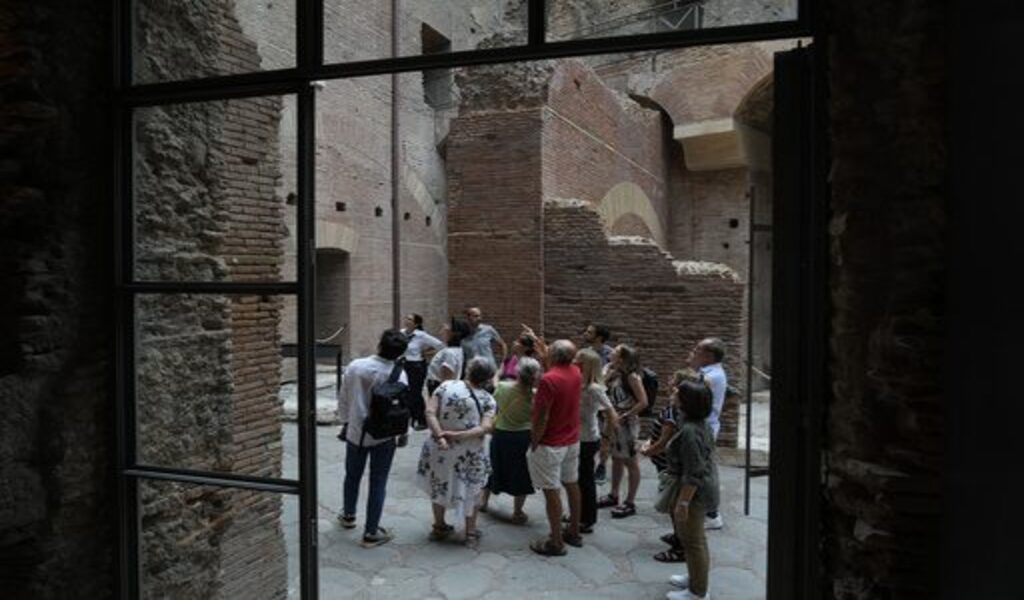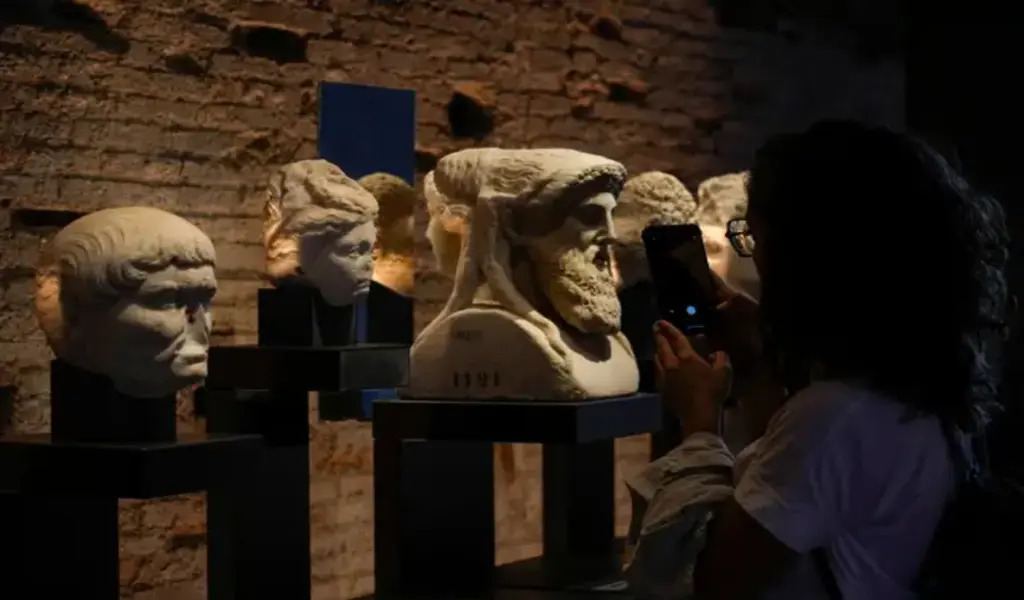News
Historic Roman Imperial Palazzo On Palatine Hill Reopens To Tourists After 50 Years Of Restoration

(CTN NEWS) – After nearly half a century of extensive restoration work, an ancient Roman imperial palace situated atop Palatine Hill in the city has once again opened its doors to tourists.
On Thursday, September 21st, the historic Domus Tiberiana, which boasts an impressive history spanning nearly 2,000 years, welcomed visitors eager to explore its grandeur.
This magnificent palace once served as the residence of rulers during the Imperial period of ancient Rome, offering breathtaking panoramic views of the Roman Forum below.
The decision to reopen this remarkable site to the public comes after years of diligent structural restoration efforts aimed at ensuring the safety and preservation of this invaluable piece of history.
Throughout these decades of restoration, painstaking excavations were conducted, unearthing a treasure trove of artifacts that shed light on centuries of Roman life, particularly during the post-empire era.
The Resurrected Power Palace: Palatine Hill’s Historic Domus Tiberiana
In a written description of the newly restored palazzo within the Colosseum Archaeological Park, which encompasses Palatine Hill, the director of the park, Alfonsina Russo, hailed it as “the ultimate power palace.”
On the eve of its reopening, Russo quoted a first-century Roman poet who marveled at the palazzo’s vastness, describing it as “infinite” and equating its grandeur to that of the sky.
Interestingly, while the domus, or residence, bears the name of Tiberius, who assumed control of the empire after Augustus’ passing, archaeological investigations suggest that the palace’s foundations actually date back to the era of Nero.
This period coincided with the aftermath of the devastating fire of 64 AD, which wreaked havoc on much of the city.
Following the decline of the Roman Empire, the residence endured centuries of neglect until the 1500s when the Farnese noble family transformed the surrounding area into an extensive garden, breathing new life into the ancient ruins.
With the palazzo now open to the public, modern-day visitors have the opportunity to gain a deeper understanding of the route that ancient emperors and their courts once traversed on their way to the domus.
Palatine Hill’s Influence: The Origin of the Term ‘Palatial’ and the Rediscovery of the Domus Tiberiana
The term “palatial” in the English language draws its inspiration from the opulent imperial residence situated atop the Palatine Hill, one of the seven hills of ancient Rome.
- Palatine Hill was renowned for its opulent palaces, and “palatial” now denotes grandeur, luxury, or palace-like elegance.
- It describes something exceptionally lavish or magnificent, particularly in architecture and interior design.
This domus, constructed on the northwest slope of the hill, is renowned as the inaugural genuine imperial palace.
Beyond being the emperor’s abode, this vast complex encompassed lush gardens, places of worship, accommodations for the Praetorian Guard responsible for safeguarding the ruler, and a service area for laborers that overlooked the Roman Forum.
Remarkably, archaeological excavations and restoration endeavors, conducted even during the coronavirus pandemic when tourism was at a minimum for several months, aided archaeologists in reconstructing centuries of history within a place that had, in Russo’s words, “somehow gone unnoticed.”
For those exploring the reopened domus, a curated assortment of hundreds of unearthed artifacts is on display, including objects made of metal and glass. Additionally, statues, various embellishments, and ancient coins were also discovered during these excavations.
RELATED CTN NEWS:
Pakistan’s General Elections Rescheduled For Late January: Key Contenders And Challenges
Iranian Women Face 10 Years In jail For inappropriate Dress After ‘hijab bill’ Approved
Remarkable Discovery: Potential World’s Oldest Wooden Structure Unearthed In Africa































